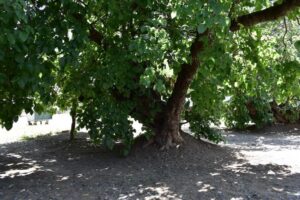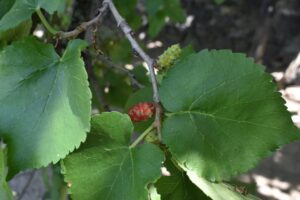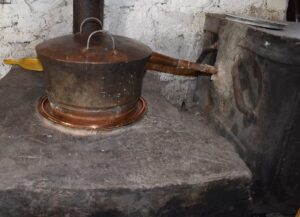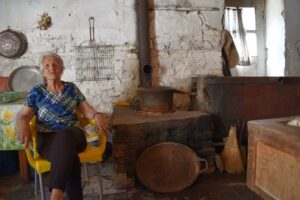Mulberry raki is a traditional brandy, produced mainly in the villages of Boboshtica and Drenova in Korça district, which is valued for its special flavor and curative values.
To extract mulberry raki, mulberries are collected during July and August when they have fully ripened, right off the mulberry tree.
The process begins with picking the fallen mulberries, one by one. The collected berries are then placed into vats (wooden barrels) for fermentation which are covered with certain cloth. This process usually runs 3 times a day, i.e. the mulberries are collected, and soaked into vats until a considerable amount is obtained to pass next into simmering. A little water is poured in and the vat is closed. Mulberries are let sit for about 2 weeks to ferment. During this process, mulberries gradually simmer while the typical simmering sound can be heard if getting close to the vat.
When simmering is no longer heard, then a jug is taken and filled with the liquid of the vat. An apparatus (alcohol meter) is floated gently into the liquid to test whether or not the liquid has been fermented. If the apparatus goes up, this indicates that fermentation has not occurred, so in this case, the vat is tight closed again. If the indicator of the device goes down and no longer rises, it means that the liquid has been fermented. From experience, raki distillers can see fermentation even by tasting the liquid. If it is bitter, it means that it has been fermented.
After fermentation, the residual mash (liquid together with mulberries or pomace) is dropped from the vat into copper alembics, which are also covered with a lid. The lid is sealed sideways with dough to prevent air from penetrating. The dough is made with flour and middlings, or flour and ash so that it is not sticky.
A slow (slow) wood fire is lit under the copper alembic. It is on the other side connected to a metal pipe (llullaja) from where the raki comes out. The pipe is inserted into a large vessel of water to condense the steam and let the raki out in liquid form. One alembic can produce up to 3-3.5 liters of raki. The raki coming out of the pipe is poured into a container placed underneath.
To give color to the mulberry raki, an apple leaf wrapped in a certain napkin can be used. It is soaked into the raki and left there all the while the raki is coming out.
Proofing of the raki quality is made by shaking a glass of raki. If a chain of bubbles emerges on the glass surface, then this raki is good, namely, strong. If no chain of bubbles emerges, it is considered soft or sweet raki. This soft raki can be stored in the existing state and served as ponç (sort of alcoholic spirit), or it can be re-collected in a separate container and added to the mash awaiting the next distillation.
The extracted raki is stored in glass containers.





